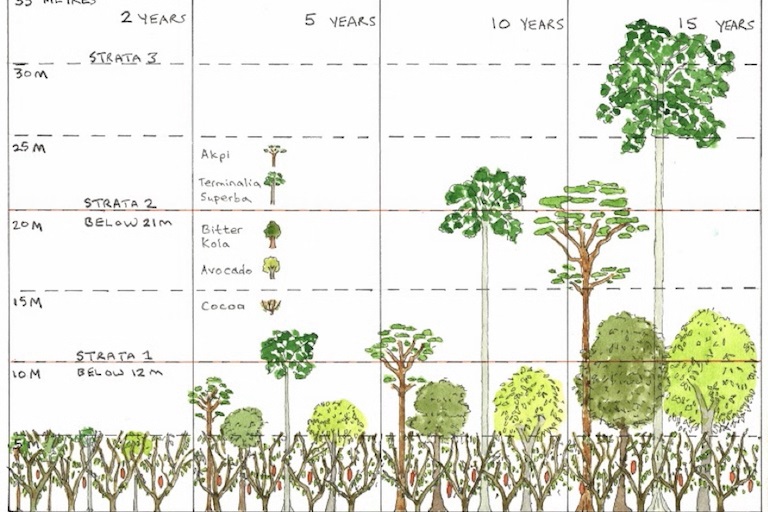The level at which the supply chain, production, sale, and consumption of chocolate meets the needs of today, without compromising the ability to meet the needs of future generations (Brundtland reference).
The concept of sustainability in business is relatively new, but should now be considered the highest priority of any company.
Chocolate’s sustainability can be best considered in four main areas: human, economic, environmental, and social.
Human sustainability considers the quality of life of all people involved throughout the chocolate production process. Investing in health care and education, ensuring healthy diets and adequate nutrition, providing access to services, promoting knowledge and skills, and various other programs are crucial for improving human value, at the same rate as worldwide economic growth.
Economic sustainability aims to improve standards of living whilst ensuring all assets are kept intact. Preference should always be made towards renewable inputs, and away from finite resources, especially when their consumption cannot be made circular.
Environmental sustainability concentrates on the impact of chocolate’s production and consumption. Adoption of agroforestry and organic farming methods, renewable energy, and modern production methods, as well as the adoption of plastic-free packaging can reduce the environmental impact upon land and sea pollution.
Social sustainability is the interrelationship of people within their environments globally. For chocolate to be socially sustainable, its production cannot cause social disparities. Resource exploitation and a lack of fair distribution of wealth often lead to socially unsustainable chocolate, which requires intervention.
Although sustainability is often considered binary (you are either sustainable or not), it is in fact a process all companies will find themselves involved in, with varying levels of consideration, priority, and real world success (Coppola reference).
With the complexities of interconnectivity in modern industries, there will always exist negative externalities; it is a business’s successes in reducing these externalities as close to zero as possible that makes that business sustainable.
Próximamente versión en español

Entry added: December 11, 2022
Verified on: September 14, 2023
Authored by
Mike Longman, Founder, Chocolarder Ltd
Chocolate Maker
References
Brundtland Report: Report of the World Commission on Environment and Development: Our Common Future, United Nations, 1987 (accessed December 15, 2022)
“Bioplastic from Renewable Biomass: A Facile Solution for a Greener Environment,” Gerardo Coppola et al., Earth Systems and Environment 5(24), 2021
Have a comment on this definition?
